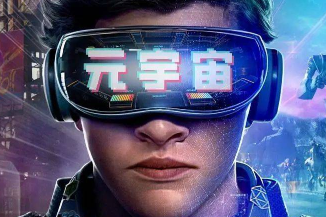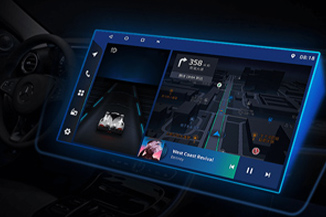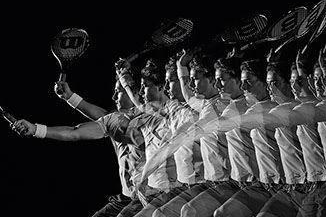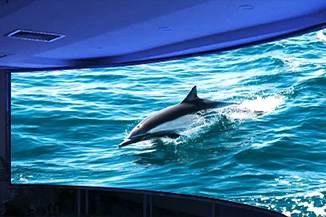Publisher: Supplier of LED Display Time: 2022-02-16 15:04 Views: 2204
In this article, the editor of LCF will take you to popularize the common terms of virtual reality, so that you can understand more intuitively and deeply what VR is all about!
Concept noun:
VR is the abbreviation of English Virtual Reality, which is translated into virtual reality in Chinese. It is a computer simulation system that can create and experience virtual worlds. It uses computers to generate a simulation environment. It is an interactive three-dimensional multi-source information fusion. System simulation of dynamic visuals and entity behavior immerses the user in the environment. This is an artificially constructed environment that exists inside a computer. Users can interact with this environment in a natural way (including perceiving the environment and intervening in the environment), resulting in the illusion of being in the corresponding real environment, a sense of immersion, and a feeling of being there.
immersion
Immersion is the most important criterion for evaluating a VR experience. Immersion is the degree to which you feel like you are really in a virtual world. A good VR must make the experiencer feel like they are really in a virtual world, rather than putting a huge screen in front of them. Immersion comes from many aspects, and vision is a very important one. The main function of the VR headset is to display the virtual world in front of people in a three-dimensional manner. When a virtual object is in front of you, when you are close to it, it will appear larger, and if you are far away from it, it will appear smaller. You can see its left side from the left, and its right side from the right, and it rushes in front of you. You will subconsciously avoid it, which is the visual immersion. In addition to visuals, immersion should include multiple senses.
One is hearing. When I heard someone calling me from behind, I just saw this person when I turned around, and I could see the sound source at the location of the sound source. Hearing in VR requires sound field technology. One is force feedback. When a force is applied in the virtual world, the body can feel the corresponding force. This requires force feedback and some motion simulation equipment. There are also some other senses, such as temperature, smell and so on. The more invocations feel, the better the immersion, but also the higher the cost. At present, even pure vision can achieve a good sense of immersion.
Vertigo
One of the side effects of VR equipment is vertigo, which is caused by inconsistencies in how the brain and body process information. The human body uses the eye and inner ear balance organs to determine whether it is in motion. Under normal circumstances, the information sent by the two to the brain is unified. But in VR, what the eyes see tells the brain "I'm moving," but the inner ear organs send the brain's state of rest. According to Science Magazine (Science Magazine), the brain's explanation for this difference is: "I'm poisoned, it's all hallucinations!" And the human body reacts instinctively to expel the "toxin" from the body, which leads to vomiting. For many people, jumping or flying is not a good idea when using a VR device. But this symptom also varies from person to person. Everyone's tolerance is different, so not everyone will dizzy and vomit. Vertigo is also one of the challenges for developers to find ways to make people have fun without causing vertigo.
Technical terms:
FOV (Field of View)
Field of View, English Field of View, referred to as FOV. In a display system, the field of view is the angle between the edge of the display and the line connecting the viewing point (eye). As shown in the figure above, the AOB angle is the horizontal field of view, and the BOC is the vertical field of view. That is to say: please open your eyes, and turn your eyes around without turning your head. Can you find that our eyes can look in four directions, up, down, left, and right? Then, within the range where the head remains stationary and does not roll his eyes, the range from the limit seen upward to the limit seen downward is the vertical field of view, and the limit seen from the left to the limit seen right is the horizontal field of view. Field of view! The field of view of VR headsets usually refers to the horizontal field of view.
From the perspective of VR experience, the larger the FOV, the less likely it will cause dizziness, and the stronger the sense of immersion (this can also be experienced in some first-person shooter shooting games), so when purchasing PC VR We can choose some products with large FOV, but this does not apply to mobile VR, because if your VR device has a wide field of view and the screen size of your mobile phone is too small, you will find the border of the mobile phone when you experience it. Thereby reducing the sense of immersion, so when purchasing mobile VR products, you must be optimistic about the size of your mobile phone and the size of the FOV of the device before purchasing
afterglow
Afterglow means that when the human eye observes the scene, the light signal is transmitted to the brain nerve, and it takes a short period of time. After the action of the light ends, the visual image does not disappear immediately. This residual vision is called "afterimage". A phenomenon is called "persistence of vision". Due to the persistence of vision effect of the human eye, the refresh rate is high enough not to notice that the screen only glows for a short time per frame. However, in order to make up for the lack of brightness, the intensity of the light emitted by the pixels in each frame should be greatly improved. The significance of the low afterglow display to the VR headset is that the trajectory of the object when the head moves is closer to the real trajectory of the physical world: at this time, the smear caused by the head movement will be greatly reduced, and the dizziness will also be greatly reduced.
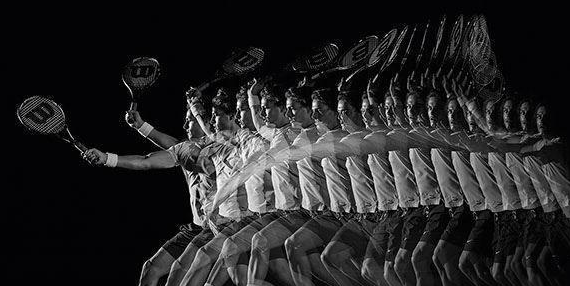
distortion
Distortion, in layman's terms, is the distortion of the image, giving people a feeling of bulge (barrel distortion) or depression (negative distortion) in the middle. due to different locations.
In order to allow users to have a real sense of immersion visually, the VR device must cover the visual range of the human eye as much as possible, so a specific spherical arc lens needs to be installed in the VR device. However, when the traditional image is projected into the human eye with the curved lens, the image is distorted, and the human eye cannot obtain the positioning in the virtual space. Distorted image. Distortion is inevitable for spherical lenses, and as the FOV (field of view) increases, edge image distortion becomes more pronounced.
However, the distorted image corresponding to the distorted lens is generated by a specific algorithm, and then after these distorted images are projected to the human eye through the distorted lens, they will become normal images, similar to "negative and positive". Of course, this method also has certain defects. Since the image at the edge of the image has been compressed when it is displayed, although the distortion is eliminated after passing through the lens, the vacant information cannot be recovered, and the problem of sharpness reduction will occur. North and because each frame has to be post-processed by software, the requirements for hardware performance are also higher, which is why HTC Vive and Oculus have higher requirements for computer configuration.
VR "delay" refers to the total latency time from the movement of the human head until the optical signal of the head-mounted display device (HMD) is mapped to the human eye. The delay will affect the player's attention, and when the delay is large, motion sickness will occur, which is commonly known as motion sickness and seasickness. The principle is that the state of the body that is visually accepted is inconsistent with the vestibular organ of the middle ear, which is responsible for perceiving the state of the body. The feedback from the central nervous system on this state is nausea, which reminds the abnormal state of the body. To put it simply, when you wear a VR headset and move your head, due to the delay, the changes observed visually are slower than those felt by the body, resulting in conflicts and dizziness. Only when this delay is controlled within 20ms, the human body will not have a rejection reaction. At the same time, more than 20ms will not necessarily cause dizziness and nausea, just like some people get motion sickness and some people don't get dizzy. Everyone's physique is different in sensitivity to delay and rejection.
Object and Interpupillary Distance
Object distance adjustment, adjust the distance between the screen and the eyes, similar to myopia / hyperopia adjustment. The object distance adjustment for VR devices is mainly front and rear adjustment, and most VR devices are compatible with 0-600 degrees of myopia.
The interpupillary distance adjustment is to adjust the distance between the two eyes. The main function is to reduce ghosting. For VR equipment, the object distance adjustment is mainly left and right adjustment.
The so-called object distance adjustment is to adjust the distance between the screen and the eyes, also known as myopia / hyperopia adjustment, suitable for users with different degrees of glasses.
The interpupillary distance adjustment is to adjust the distance between the two eyes. The main function is to reduce ghosting. Looking at the animation above, it is already fully understood.


